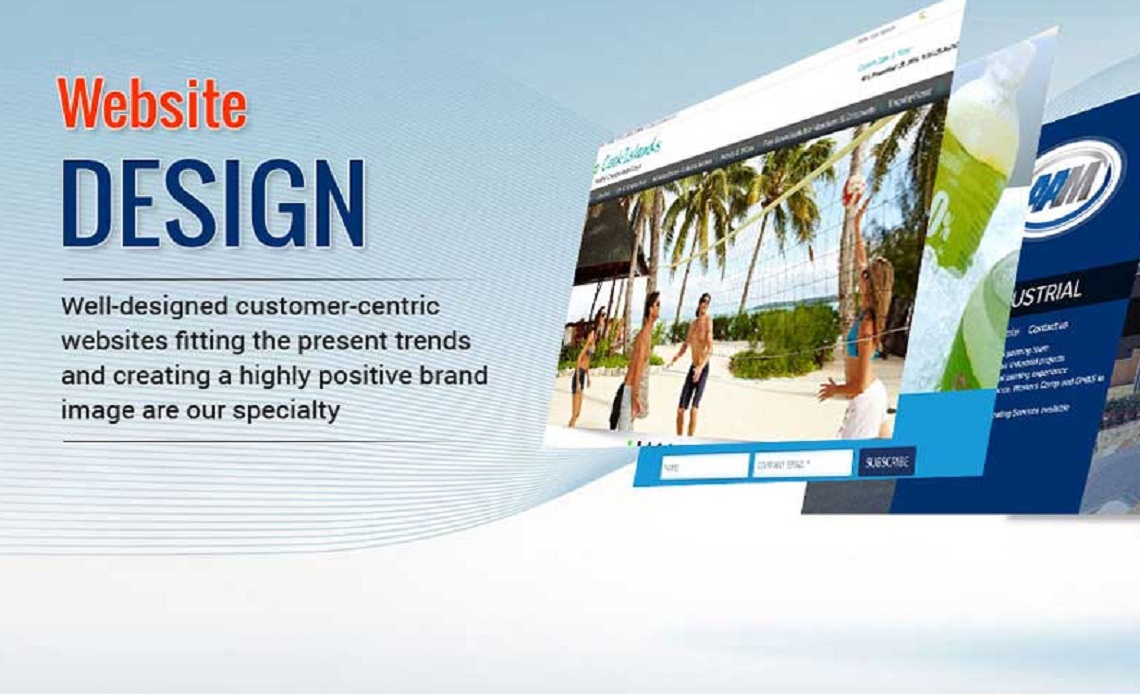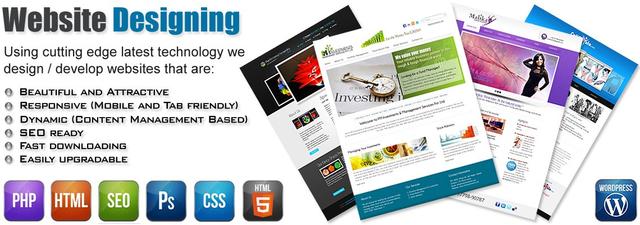Vital Functions to Try To Find in Web Design Pretoria Provider
Vital Functions to Try To Find in Web Design Pretoria Provider
Blog Article
A Comprehensive Overview to Responsive Web Layout Methods
Responsive web style has actually come to be a vital element in the growth of electronic systems, permitting for a smooth customer experience across a plethora of gadgets. The landscape of web style is frequently evolving, increasing concerns concerning the future of responsiveness and the approaches that will certainly define it.
Comprehending Receptive Website Design
Receptive website design (RWD) is an approach that ensures a site's layout and web content adapt perfectly across a variety of devices and screen dimensions (Web Design Pretoria). This style method is necessary in today's electronic landscape, where individuals accessibility sites from smartphones, tablets, laptop computers, and desktop computer computers. RWD improves individual experience by allowing a website to keep capability and looks, despite the gadget being utilized
A key part of RWD entails fluid grids that make use of loved one systems, such as percents, instead than dealt with systems, to define format aspects. This adaptability makes it possible for photos, text, and various other elements to resize proportionally, offering an ideal watching experience. Furthermore, media questions are utilized to use various designs based upon gadget attributes like display width and alignment. This method ensures that the web site's style is customized to the specific requirements of customers, improving usability.
In addition, RWD adds positively to look engine optimization (SEARCH ENGINE OPTIMIZATION) by advertising a single, regular URL for a website, which streamlines link sharing and indexing. As smart phone use remains to increase, comprehending and applying responsive website design is essential for businesses aiming to get to a more comprehensive audience and improve general web performance.
Secret Principles of Responsive Style
To produce an efficient responsive design, several key principles must be considered. This means creating for the smallest screens first and progressively enhancing the design for bigger gadgets.
2nd, adaptable grids and formats are crucial. Using a grid system that adapts to various display sizes permits an unified distribution of content, ensuring readability and use throughout devices. This adaptability is matched by the use of relative systems, such as percentages or ems, instead than repaired pixels.

Finally, focusing on content pecking order is necessary. Sensible and clear organization of material boosts customer experience, assisting visitors through the website seamlessly, regardless of the tool made use of. Web Design Pretoria. By adhering to these principles, developers can create web sites that are not only visually attractive but additionally practical and user-centered throughout all tools
Strategies for Liquid Layouts
Fluid designs are essential for creating flexible web experiences that effortlessly get used to numerous display sizes. By using percentage-based sizes rather than dealt with pixel values, designers can make sure that aspects on a page resize proportionally, maintaining visual harmony throughout gadgets. This method advertises adaptability, permitting web content to adjust and move as the viewport adjustments.
One reliable approach for achieving fluid layouts is to utilize CSS Flexbox or Grid systems. These CSS modules allow designers to produce receptive frameworks that can conveniently resize and reorganize based upon the readily available room. Flexbox masters one-dimensional formats, while Grid is perfect for two-dimensional arrangements, providing better control over positioning and alignment.
One more method involves using media inquiries to specify breakpoints where adjustments are required - Web Design Pretoria. By specifying different designs for numerous display dimensions, developers can change format homes dynamically, making certain ideal usability and aesthetic appeal
In addition, integrating family member units like ems or rapid eye movements for font dimensions and spacing can additionally enhance fluidness, as these systems read what he said scale based upon individual settings or moms and dad aspects. Together, these strategies assist in the advancement of liquid designs that promote an interesting individual experience throughout diverse devices.
Maximizing Pictures for All Devices
Photos play an essential role in internet design, and maximizing them for different tools is crucial for enhancing efficiency and user experience. To achieve this, developers need to employ responsive image strategies that ensure images present correctly throughout different screen sizes and resolutions.
One effective method is utilizing the HTML" element, which enables for defining numerous picture resources based on the screen problems. By employing 'srcset' qualities, developers can supply various image resolutions, making it possible for the browser to select one of the most ideal one for the user's gadget.
In addition, executing appropriate file layouts is important. Styles such as JPEG, PNG, and WebP each offer distinct objectives and can significantly impact filling times. WebP, for example, uses premium compression, resulting in smaller data dimensions without giving up quality.
One more important element is photo compression. Devices like TinyPNG or ImageOptim can reduce file sizes, improving filling speed while maintaining visual integrity. Additionally, utilizing CSS for background images can improve loading as they can be manipulated much more fluidly throughout devices.
Inevitably, maximizing pictures not just improves website performance but also adds to much better individual interaction and retention, making it a fundamental practice in receptive internet design.
Testing and Maintaining Responsiveness
Ensuring a seamless customer experience across various tools calls for attentive testing and maintenance of responsiveness. The initial step in this procedure is to utilize a mix of handbook and automated testing devices. Tools such as Google's Mobile-Friendly Test and BrowserStack permit designers to sneak peek just how their web official source sites carry out across numerous devices and display dimensions effectively.
Furthermore, it is vital to do routine audits of your site's layout and performance. This includes checking for breakpoints, making certain components resize correctly, and confirming that navigating continues to be instinctive. In addition, testing needs to not be restricted to aesthetic facets; capability across different internet browsers and tools must be examined to recognize any disparities.

Verdict
To conclude, the execution of receptive web design methods is essential for creating adaptable internet sites that enhance user experience throughout diverse gadgets. By sticking to crucial principles such as fluid grids, media queries, and versatile formats, along with enhancing images and utilizing receptive frameworks, developers can achieve visual appeal and enhanced loading rates. Recurring screening and maintenance further guarantee that internet sites remain useful and visually pleasing, inevitably contributing to boosted individual engagement and contentment.
Receptive internet style has become a crucial element in the growth of electronic systems, allowing for a seamless user experience throughout a multitude of devices.Receptive web style (RWD) is a technique that guarantees a web site's design and web content adjust effortlessly throughout a range of tools and screen dimensions. RWD improves customer experience by allowing a web site to keep capability and aesthetics, regardless of the tool being utilized.
Making sure a seamless customer experience throughout numerous devices calls for attentive testing and upkeep of responsiveness.In conclusion, the application of receptive internet design strategies is essential for developing versatile web sites that enhance individual experience throughout varied devices.
Report this page